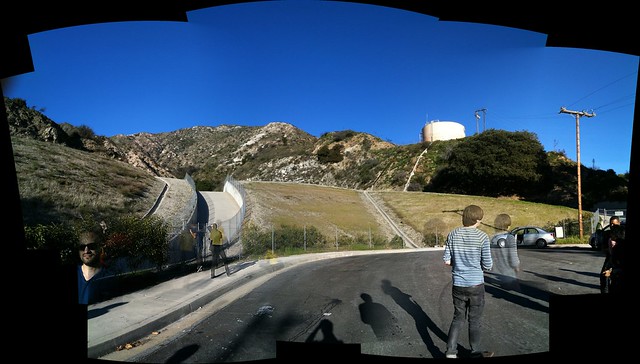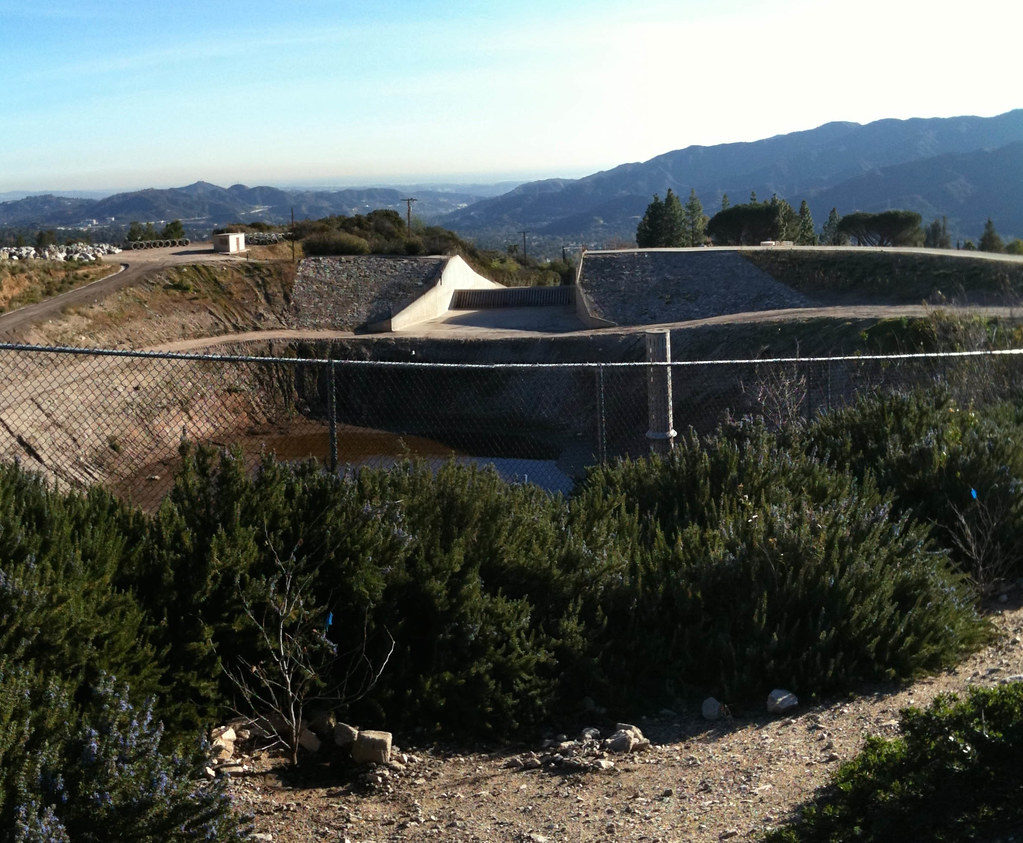Landscape Futures Super-Media
 [Image: For a project at the Bartlett School of Architecture's Unit 11, presented and discussed at the Landscape Futures Super-Workshop, Rina Kukaj explored a series of aerial landscapes—a "purification blanket"—that would act as a distributed atmospheric filter for the city].
[Image: For a project at the Bartlett School of Architecture's Unit 11, presented and discussed at the Landscape Futures Super-Workshop, Rina Kukaj explored a series of aerial landscapes—a "purification blanket"—that would act as a distributed atmospheric filter for the city].Two write-ups of the Landscape Futures Super-Workshop have appeared. In one, Nate Berg, writing for Domus, refers to what he calls "a new shared and experimental approach to curating" that helped to animate the super-workshop's various events. In another, Friends of the Pleistocene describe their burgeoning research project into the debris basins on the edge of the city, a "long-term project to map their locations and create a typology of their forms," which kicked off during the super-workshop.
Each debris basin "exists as a 'signaling device,'” they write.
- Each announces that geologic change unfolds here, right here, in continuous and unpredictable ways. Each basin also exemplifies the best human attempt to build, plan for and contain the potentially uncontainable: the material reality of geologic time and force. When flowing debris activates these basins, an incredible shape-shifting occurs: the force and materiality of geologic time actually become perceivable. Solid becomes liquid, the far becomes near, virtual becomes actual, top becomes bottom, and a precarious equilibrium loses its poise as the habitable instantly becomes uninhabitable.
 [Image: Landscape Futures Super-Workshop students visit a debris dam at the top of Pine Cone Road].
[Image: Landscape Futures Super-Workshop students visit a debris dam at the top of Pine Cone Road].The outermost suburbs of L.A. have reached what McPhee calls the “real-estate line of maximum advance” against the dark bulk of the San Gabriels—a range “divided by faults, defined by faults, and framed by them.” The San Gabriels “are nearly twice as high as Mt. Katahdin or Mt. Washington,” he points out, “and are much closer to the sea. From base platform to summit, the San Gabriels are three thousand feet higher than the Rockies.” However, they are also “disintegrating at a rate that is also among the fastest in the world.”
The San Gabriels produce, in the process, extraordinary rockslides: “On the average, about seven tons disappear from each acre each year—coming off the mountains and heading for town.” These slides are known as debris slugs, and they “amass in stream valleys and more or less resemble fresh concrete. They consist of water mixed with a good deal of solid material, most of which is above sand size. Some of it is Chevrolet size.” Debris slugs have been known to contain “propane tanks, outbuildings, picnic tables, canyon live oaks, alders, sycamores, cottonwoods, a Lincoln Continental, an Oldsmobile, and countless boulders five feet thick.” And all of it comes crashing down—frequently going right through people’s houses.
 [Image: The debris dam & basin at the strikingly beautiful Deukmejian Wilderness Park].
[Image: The debris dam & basin at the strikingly beautiful Deukmejian Wilderness Park].In the face of “this heaving violence of wet cement,” as McPhee describes it, new architectural techniques have become urgently necessary. “At least one family,” for instance, “has experienced so many debris flows coming through their back yard that they long ago installed overhead doors in the rear end of their built-in garage. To guide the flows, they put deflection walls in their back yard. Now when the boulders come they open both ends of their garage, and the debris goes through to the street.” The house becomes a mechanism through which mobile geology violently flows.
Mazes of street barriers, deflection walls, overhead doors, feeder channels, concrete crib structures—these emerging typologies are not just limited to the domestic world. The whole city’s in on it. Los Angeles County “began digging pits to catch debris,” McPhee explains, surrounding itself with a necklace of voids in order to counteract an earth that moves.
The city’s debris pits are “quarries, in a sense, but exceedingly bizarre quarries, in that the rock [is] meant to come to them.” They are strange attractors, sometimes “ten times as large as the largest pyramid at Giza.”
 [Image: Deflection walls protect houses not from terrorist attack or from runaway automobiles, but from geology: rocks spalling off the nearby hills and rolling through the neighborhood; photo by Friends of the Pleistocene].
[Image: Deflection walls protect houses not from terrorist attack or from runaway automobiles, but from geology: rocks spalling off the nearby hills and rolling through the neighborhood; photo by Friends of the Pleistocene].Easily one of the most fascinating aspects of our field trip was seeing the sheer quantity of concrete deflection walls—aka Jersey barriers—that have come to line whole streets and front yards in these mountainous neighborhoods.
Objects now more popularly associated with anti-terror measures, these barriers are actually there to protect Los Angeles residents from geology. In many cases, private homes are all but invisible behind monolithic concrete barriers, surely begging a more elegant—not to mention permanent—architectural solution.
Entire, gently curving suburban roadway networks have thus been turned into emergency deflection labyrinths, extending the geometric logic of the debris basins above them.
In any case, I look forward to the results of Friends of the Pleistocene's research, and their post is worth reading in full.





Comments are moderated.
If it's not spam, it will appear here shortly!
Post a Comment